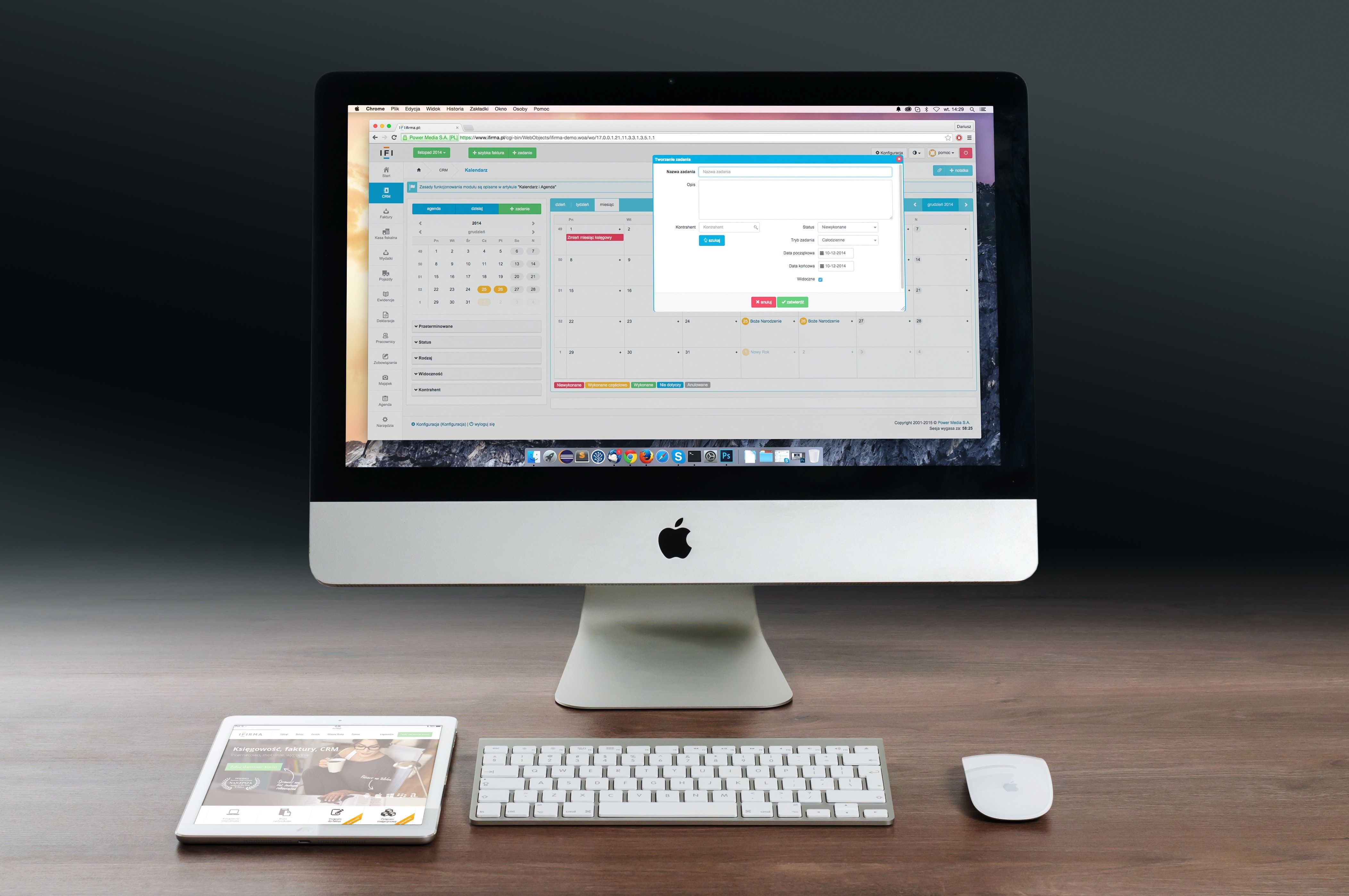Apple just announced a new release for the iMac range, Apple’s desktop-based computer lineup. The new 24-inch iMac, with its Apple M1 chip and a new look, will be out in mid-May 2021.
Apple is still selling the 21.5-inch and 27-inch iMacs, which were last updated in August 2020, giving them solid state drives and new Intel chips. The 27-inch had the most computing power and the better display.
So, how does the new 24-inch iMac compare to the 27-inch iMac, which used to be the top dog?
Comparing iMac Computing Power

The 27-inch iMacs currently available have 10-core Intel Core i9 processors, and can have 8GB to 129GB of RAM installed within them. That’s a lot of computing power.
The new 24-inch iMacs are working with the new Apple M1 chips. These chips have an 8-core CPUs, 16-core Neural Engines, and 7- or 8-core GPUs, depending on which 24-inch iMac you get.
This might make it seem like the 24-inch iMac isn’t quite able to process as quickly as the 27-inch iMac. According to Apple though, the M1 chip should use 25 to 33 percent less power with up to four times faster performance for most tasks. So the M1 chip is at least presented as doing more with fewer cores.
The 27-inch iMac still has more space for RAM though. The 24-inch iMacs can only have 8GB or 16GB.
This RAM is unified memory though. The RAM on the 27-inch iMac has specific pools of RAM set aside for certain tasks. The RAM on the 24-inch iMac is all linked together so the processor can access more RAM when it needs it.
Depending on how much RAM you really need, the newest iMacs might be perfect, or they might come second to the 27-inch model. It depends on you and your computing needs.
Comparing iMac Storage
All storage on the 24-inch and 27-inch iMacs exists on an SSD (solid state drive). You can increase the amount of storage on an iMac to certain levels, depending on which one you go for. But you obviously pay more the more storage you add.

The 27-inch has the most storage potential of the current iMac models.
The two-port 24-inch iMac has storage options of 256GB, 512 GB, or 1TB. While the more expensive four-port model (which also has an 8-core GPU) offers up to 2TB.
In contrast, the 27-inch iMac goes all the way to 8TB of memory storage.
So the 27-inch model has way more storage space. This can just result in a high price tag. That’s true of the 24-inch iMacs as well, but the chance to get more storage might make your money go further. Certainly, having extra storage on your computer never hurts!
Comparing iMac Displays
The 24-inch iMac sports a 4.5K Retina display. The display size is 4480x2520 pixels and, like the 27-inch iMac, can go as high as 500 nits of brightness while also featuring P3 Wide color and True Tone technology.

Thanks in part to its larger screen, the 27-inch iMac has a display size of 5120x2880 pixels. It has a 5K Retina display, a slight step above the 24-inch. It might not be enough to give the 27-inch an edge for you. But the 27-inch also can come with nano-texture glass.
Nano-texture glass has greatly reduced glare and reflections. So if you don’t like glossy screens, the 27-inch iMac might be the winner.
Nano-texture glass does cost an additional $300 on top of the cost of the iMac. So perhaps the 24-inch iMac is more economical for you. We think the screens are fairly comparable other than the possibility for nano-glass.
Design
As we’ve recently covered, the iMac has received a stunning redesign with the 24-inch release. It’s slimmer than any previous iMac and comes in seven colors.
The 27-inch iMac only comes in silver.
The 24-inch iMac is 5.8 inches thick and weighs 9.83 pounds. In contrast, the 27-inch is 8 inches thick and weighs 19.7 pounds.
The bezel of the 24-inch iMac is also a lot slimmer. So it’s a sleeker look compared to the 27-inch. But the 27-inch still has the larger screen.

The 27-inch iMac also has a wider variety of ports on it. The 27-inch comes with two USB-C/Thunderbolt 3 ports, four USB-A ports, and an SDXC card slot.
It also has a Gigabit Ethernet port and a 3.5mm headphone jack, which the 24-inch iMac has too. The two-port 24-inch iMac otherwise only has two Thunderbolt/USB 4 ports. The four-port 24-inch model has two Thunderbolt/USB 4 ports and two USB 3 ports.
It’s likely you have computer accessories that are more compatible with the 27-inch iMac. But if you don’t mind investing in adapters, the 24-inch iMac could still suit you fine. Particularly if you don’t plug things into your computer a lot.
Comparing iMac Keyboards

The 27-inch iMac can use wired or wireless keyboards of many kinds, including most models of the Magic Keyboard. The only Magic Keyboards don't work with it are the new models that feature Touch ID.
The Magic Keyboard with Touch ID allows you to unlock your iMac via the Touch ID button on the top-right corner of the keyboard. You can also use Touch ID to quickly lock or unlock your iMac should you need to do so.
Touch ID can also input passwords you have saved on your iMac and let you quickly pay for items if you have Apple Pay set up.
The Magic Keyboard with Touch ID only works with computers that have the M1 chip. This includes the 24-inch iMac, but also the latest MacBooks and the newest M1 iPad Pro.
The 24-inch iMac can work with other wired or wireless keyboards that are compatible with Mac as well. So it has a few more options available to it in the keyboard market.
Comparing iMac Cameras and Mics
The 24-inch and 27-inch iMacs have 1080p FaceTime HD cameras built into them for video calls and Photo Booth sessions. The 24-inch iMac’s camera is a bit better, though, as it includes the new M1 image signal processor.

This new image signal processor has improved white balance and auto exposure, which, combined with better photo noise reduction, creates better images from the camera.
It’s a similar story with the built-in microphones on the iMacs. The 27-inch iMac has a studio-quality three-mic array inside of it.
The 24-inch has the same, but with high signal-to-noise ratio and directional beamforming. The sound picked up by this mic is crisper and cleaner than the 27-inch iMac can manage.
If you already have an external webcam and microphone, you might not need the enhanced ones on the 24-inch iMac. But if you don’t, or you prefer everything to be built-in, the 24-inch iMac is the clear winner here.
Pricing
The two-port 24-inch iMac with the 7-core GPU will be sold in mid-May for a starting price of $1,299. The four-port model, which also has an 8-core GPU, starts at $1,499.
You pay about $200 for every additional 256GB of storage you add to these computers, and you’ll pay more to upgrade your RAM and other features too.
The 27-inch iMac starts at $1,799. Additional storage and RAM has similar pricing to the 24-inch, but with the 27-inch you can also pay more for faster processors and the nano-texture glass.
None of these computers are cheap. If you have the budget for it, the 27-inch iMac gives you more customization for more money. It’s just much more expensive than the new 24-inch all around. So to get a great computer for less money, the 24-inch iMac is your best bet.
Which iMac Is Better?
The 27-inch iMac still seems to have a place in the market. It’s bigger, it can have more storage, it has more ports, and its display is slightly superior.
However, the 24-inch iMac still has more computing power, a better camera and microphone, and a sleeker design while costing less.
Ultimately the winner of this face-off depends on you and your preferences. But we think either computer could make a person happy for a while. At least until Apple releases its next line of iMacs and the debate starts again!
Better keep learning about 24-inch iMac in the meantime so you can be prepared for the next Apple computer debate.
Comments
Post a Comment